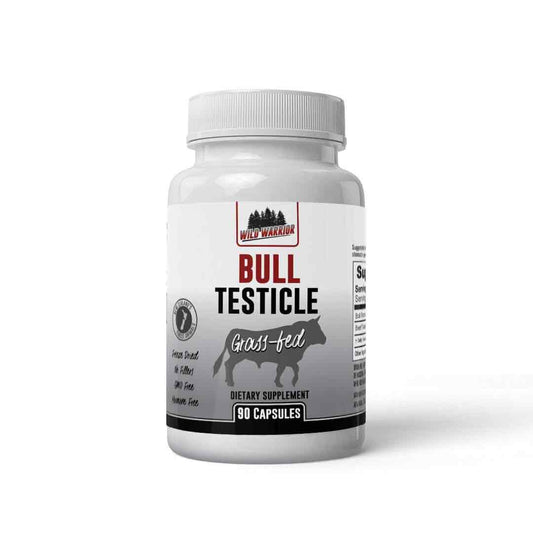There are many high intensity training techniques to help you build more muscle, but one overlooked technique that can be extremely beneficial is the use of long length partials. Unlike traditional full range-of-motion (ROM) exercises, long length partials focus on working muscles in their elongated state only, avoiding both points where resistance is near zero.
Here we discuss the benefits of long length partials in building muscle, relevant research, and why you should experiment with using them in your training.
What Are Long Length Partials?
Long length partials involve performing exercises within a specific portion of the movement, primarily where the muscle is in a stretched or elongated position.
For example, instead of executing a full bench press, you would lower the barbell to just above your chest and then press it back up, without fully locking out your elbows. This method targets the muscle fibers when they are most stretched, potentially eliciting unique adaptive responses.
We have to point out that long length partials are hard! You will need to lower the weight on each exercise to do this safely. However, when you use a partial range of motion a very small amount of resistance will feel very heavy.
Benefits of Long Length Partials
1. Enhanced Muscle Activation
Studies have shown that training in the stretched position can lead to higher levels of muscle activation. The greater the stretch, the more muscle fibers are recruited to perform the lift1. By focusing on the long length partials, you can effectively target hard-to-reach muscle fibers that might not be as engaged during full ROM exercises.
This is incredibly effective when combined with something like super slow training.
2. Increased Time Under Tension (TUT)
Time under tension is a critical factor in muscle hypertrophy. Long length partials inherently increase the TUT by maintaining muscle engagement throughout the elongated phase of the movement. This extended tension can lead to greater metabolic stress and microtrauma in the muscle fibers, both of which are essential for growth2.
As little as 30 seconds in the fully contracted position will cause an insane burn if you use the right weight, as the muscle never gets to rest.
3. Improved Flexibility and Mobility
Performing exercises in the muscle's stretched state can also enhance flexibility and joint mobility. Strengthening a muscle at its elongated length helps improve the muscle’s ability to generate force across a broader range of motion, which can translate into better performance and reduced injury risk3.
4. Overcoming Strength Plateaus
Incorporating long length partials can be an effective strategy to overcome strength plateaus. By targeting muscles in a different way, you can stimulate new growth and adaptation. This variation can shock the muscles, promoting further development and breaking through stagnation4.
How to Incorporate Long Length Partials into Your Training
1. Choose the Right Exercises
Not all exercises are suitable for long length partials. Focus on compound lifts and key isolation movements where maintaining a stretched position is feasible and safe. Examples include:
- Bench Press: Perform the lower half of the movement.
- Squats: Focus on the bottom half of the squat.
- Bicep Curls: Lower the weight to the extended arm position and curl up halfway.
- Lat Pulldowns: Pull down to the fully stretched position and return halfway up.
2. Start with Light Weights
Since long length partials can place significant stress on the muscles and joints, start with lighter weights to master the form and avoid injury. Gradually increase the load as you become more comfortable with the movement.
3. Integrate with Full ROM Exercises
Combine long length partials with full ROM exercises to ensure comprehensive muscle development. For example, perform 3 sets of full ROM bench presses followed by 2 sets of long length partial bench presses.
4. Focus on Control and Form
Maintain strict control and proper form throughout the movement to maximize muscle engagement and minimize the risk of injury. Avoid using momentum or bouncing at the end of the range.
5. Pay Attention to Recovery
Due to the increased muscle activation and TUT, long length partials can be demanding. Ensure adequate recovery between sessions, including proper nutrition, hydration, and sleep
Long length partials offer a unique and effective approach to muscle building by emphasizing muscle activation, increasing time under tension, and improving flexibility. Incorporating this technique into your training regimen can help you break through plateaus and achieve new levels of muscle growth.
By understanding the benefits and integrating long length partials into your workouts, you can unlock new potential in your muscle-building journey. Remember to start light, focus on form, and balance your training with full ROM exercises for optimal results.
References
By embracing this advanced training technique, you can take your muscle-building efforts to the next level and achieve a more balanced and robust physique.
Footnotes
-
Wakahara, T., Ema, R., Miyamoto, N., & Kawakami, Y. (2013). Increase in vastus lateralis aponeurosis width induced by resistance training: implications for a hypertrophic model of pennate muscle. European Journal of Applied Physiology, 113(9), 2513-2522. SpringerLink
-
Schoenfeld, B. J. (2010). The mechanisms of muscle hypertrophy and their application to resistance training. Journal of Strength and Conditioning Research, 24(10), 2857-2872. Journal of Strength and Conditioning Researc
-
McMahon, G. E., Morse, C. I., Burden, A., & Onambélé, G. L. (2014). Impact of range of motion during ecologically valid resistance training protocols on muscle size, subcutaneous fat, and strength. Journal of Strength and Conditioning Research, 28(1), 245-255. PubMed
-
Walker, S., Ahtiainen, J. P., & Häkkinen, K. (2010). Acute neuromuscular and hormonal responses during contrast loading: effect of 11 weeks of contrast training. Scandinavian Journal of Medicine & Science in Sports, 20(2), 226-234. PubMed





